Health and Physical Education
The first grade health and physical education objectives reflect the Virginia Standards of Learning. Instruction reinforces the Standards of Learning in the core subject areas.
Motor Skill Development
- Performs fundamental motor skills and specialized movement patterns.
Anatomical Basis of Movement
- Uses cognitive information to enhance motor skill acquisition and performance.
Fitness Planning
- Communicates the knowledge to achieve and maintain a health-enhancing level of fitness.
Social Development
- Expresses and uses responsible personal and social behaviors in activity settings.
Energy Balance
- Uses health concepts related to health promotion and improvement of personal health.
Personal Health
- Demonstrates the ability to access, evaluate and use health information to recognize the relationship between personal behavior and personal health.
|
1st Grade Health and Physical Education |
||||
|
Essential Questions |
How do I use my body during different movement skills? What are the names of some of my organs and how do they work together? How can I play safely and cooperatively? |
|||
|
Unit Title and Quarter |
Quarter 1 |
Quarter 2 |
Quarter 3 |
Quarter 4 |
|
Move Safely |
Move in New Ways |
Move to Grow |
Move with Others |
|
|
Image Cue |
|
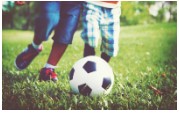
|

|
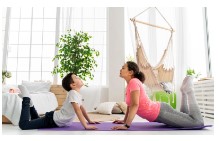
|
|
Focus of the Story |
We start our year by showing that we remember how to move and play safely with our classmates to stay fit and healthy. |
As we learn new skills to participate in different activities, we begin to understand that our body on the inside controls our body on the outside. |
As we learn more about our bodies we learn that running, jumping, and playing are fun, but our heart, lungs and other organs can only stay healthy and grow strong if we put good things into our bodies. |
Now that we understand how movement helps us grow and how to move safely, we can encourage our family, friends and peers to work together to stay fit and healthy. Lifelong movement is a key to healthy bodies. |
|
Transfer Goals |
Collaborate through activities and games, developing social and competitive skills, improving physical fitness, and increasing ability. Demonstrate socially responsible behavior to include respect for themselves, others, and the environment in thoughts, words, and actions. |
Describe the major parts of the body and how to care for them to improve or maintain personal health. Apply knowledge of bone and muscle movement to articulate movement in a variety of patterns, and spaces for health, enjoyment, or challenge. |
Apply knowledge of bone and muscle movement to articulate movement in a variety of patterns, and spaces for health, enjoyment, or challenge. Analyze diverse sources and perspectives to make thoughtful judgments regarding physical and mental health decisions. Analyze data and use goal-setting skills to identify appropriate choices to enhance well-being. |
Collaborate through activities and games, developing social and competitive skills, improving physical fitness, and increasing ability. Identify internal and external factors that affect community, physical, emotional, and social health and generate possible solutions. |
|
Learning Targets |
I can share equipment and space with my class and demonstrate this in a physical activity or game. I can control my emotions while playing with my classmates. |
I can identify my heart, brain, lungs, and stomach and show where they are to a classmate. I can name and demonstrate an activity that increases my heart rate. I can throw or kick a ball to a partner while moving. |
I can discuss with a partner how our bodies use energy from food to help us move. I can name and identify one food from each food group. I can explain the importance of saying no to accepting drugs from a stranger. |
I can name one activity to do at home with family or friends that will raise our heart rates. I can explain why it is important to look both ways when crossing the street. |
Instructional Technology
The first grade Digital Learning Integration Standards offer children a variety of instructional technology experiences based on the Profile of a Virginia Graduate. These standards are comprehensive statements that explain foundational knowledge, skills, and experiences aligned to the grade K through second curriculum standards.
Empowered Learner: Students leverage technologies, including assistive technologies, to take an active role in choosing, achieving and demonstrating competency in their learning goals informed by the learning sciences.
Digital Citizenship: Students recognize the rights, responsibilities and opportunities of living, learning and working in an interconnected digital world, and they act in ways that are safe, legal and ethical.
Knowledge Constructor: Students critically curate a variety of digital resources using appropriate technologies, including assistive technologies, to construct knowledge, produce creative digital works, and make meaningful learning experiences for themselves and others.
Innovative Designer: Students use a variety of technologies, including assistive technologies, within a design process to identify and solve problems by creating new, useful or imaginative solutions or iterations.
Computational Thinker: Students develop and employ strategies for understanding and solving problems in ways that leverage the power of technological methods, including those that leverage assistive technologies, to develop and test solutions.
Creative Communicator: Students communicate clearly and express themselves creatively for a variety of purposes using appropriate technologies (including assistive technologies), styles, formats, and digital media appropriate to their goals.
Global Collaborator: Students use appropriate technologies, including assistive technologies, to broaden their perspectives and enrich their learning by collaborating with others and working effectively in teams locally and globally.
Essential Information Literacy Skills (EILS)
The first-grade Essential Information Literacy Skills (EILS) enhance student experiences for developing skills in information literacy, inquiry, collaboration, and engaging with knowledge products safely and ethically. These skills are achieved through the collaboration of the classroom teacher and the library media specialist (LMS).
Inquire: Build new knowledge by inquiring, thinking critically, identifying problems, and developing strategies for solving problems.
- Display curiosity and initiative by asking questions about topics of interest.
- Adapt, communicate, and exchange learning products with others.
- Participate in an ongoing inquiry-based process.
Include: Demonstrate an understanding of and commitment to inclusiveness and respect for diversity in the learning community.
- Interact with a diverse group of peers in a respectful manner and by sharing their perspectives.
Collaborate: Work effectively with others to broaden perspectives and work toward common goals.
- Actively listen in a group and work with others to solve problems.
- Participate with others in learning situations by actively contributing to group discussions.
Curate: Make Meaning for oneself and others by collecting, organizing, and sharing resources of personal relevance.
- Understand how an information resource is organized
- Title, author, call number, illustrator, title page, publisher, copyright date, spine
- Nonfiction text feature
Explore: Discover and innovate in a growth mindset developed through experience and reflection.
- Develop and satisfy personal curiosity by reading widely and deeply in multiple formats and writing for a variety of purposes.
- Construct new knowledge by problem solving through cycles of design and implementation.
- Problems solved through reflection and revision; be open to feedback.
Engage: Demonstrate safe, legal and ethical creating and sharing of knowledge products independently while engaging in a community of practice and an interconnected world.
- Follow ethical and legal guidelines for gathering and using information by complying with the school division’s Acceptable Use Policy.
- Recognize the importance of citing sources.
- Create a product with a specific message for an intended audience.
- Extend personal learning by selecting appropriate sources and formats and by locating materials in the library for personal growth and pleasure.
Art
The elementary art program is designed as a concept-based, sequential curriculum that makes connections between art and life. Students will explore art through the creative process, critical thinking and communication, history/culture/citizenship, innovation in the arts, art techniques and applications, and the core curriculum.
Art in the first grade develops concepts and skills in observation, problem-solving, and communication. A balance between instruction and creating helps students to examine and develop an appreciation of the visual images in their immediate environment. Elementary art focuses on developing the skills needed to create art and become informed consumers. Students participate in an art class each week taught by an art teacher.
Creative Process
- Applies the creative process through inquiry, investigation, generating ideas, testing solutions, refining and reflecting on process and product
Critical Thinking and Communication
- Demonstrates an understanding and appreciation that art can have diverse values, meanings and definitions; uses appropriate vocabulary and communication when responding to works of art
History, Culture and Citizenship
- Demonstrates an understanding that art is a reflection of time, place and culture, and identifies the value and reasons for creating art within communities
Innovation in the Arts
- Understands and applies the artistic process, problem-solving skills, current and emerging technologies while making connections to visual arts careers
Technique and Application
- Uses artistic skills and techniques when developing ideas for creative expression through a variety of media
|
1st Grade Art The visual arts curriculum is taught through the lens of authentic school-based themes and concepts. Units can vary within the needs of each school community. |
||||||
|
Essential Questions |
What Are the Big Issues About Art? How and Why Do We Make Art? How Does Art Relate to History and Culture? How Do We Respond to Works of Art? |
|||||
|
Unit Title and Quarter |
QUARTER 1 |
QUARTER 2 |
QUARTER 3 |
QUARTER 4 |
||
|
What is Art? |
Artists & Designers |
Culture & Tradition |
Imagination |
|||
|
Image Cue |

Andre Derain, Charing Cross Bridge, London, 1906. Oil on Canvas. |

Alexander Calder Bird Pull Toy, 1951. Assemblage |
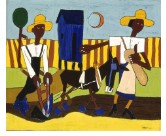
William Henry Johnson, Sowing, ca. 1940 |

Jaume Plensa, The Crown Fountain, 2004. Digital Technology |
||
|
Focus of the Story |
We begin our artist journey by looking at how Art allows us to see beauty in natural and man-made objects by answering the big question, where do we find beauty in our world? Where does one see art in their everyday life, and how does this inspire us to create? |
Once we understand the beginning steps, we can continue our journey by thinking and working as artists and designers. We can reflect on our artmaking and create pieces inspired by various places and themes that connect to our own personal connections. |
Now, we can move into discovering the value of art, reasons for creating art and how it becomes a reflection of time, place and culture. Art has changed and developed overtime and we need to reflect on the past to create pieces for the future. |
Finally, we can look at how art can challenge us to see things in new ways and can stretch our imagination. We can discover artists who use innovative methods and materials and be inspired by their original ideas. |
||
|
Transfer Goals |
The Creative Process Apply creative process through inquiry, investigation, generating ideas, testing solutions, refining, and reflecting on process and product while developing a personalized portfolio exhibiting original voice and vision as an artist. |
Critical Thinking & Communication Understands and develops an appreciation that art can have diverse values, meanings, and definitions while recognizing multiple responses and perspectives. Effective at receiving and articulating ideas using appropriate vocabulary and communication when responding to works of art. Able to work independently and collaboratively. Innovation in the Arts Understands and applies the artistic process, problem-solving skills, current and emerging technologies while making connections to visual arts careers. |
History/Culture/Citizenship: Explore and understand historical influences of art through the work of self and others while cultivating an awareness that art is a reflection of time, place and culture. Students identify and interact with art as a community member and citizen, developing a lifelong engagement with art as a supporter, advocate, creator, and informed viewer. |
Critical Thinking & Communication Understands and develops an appreciation that art can have diverse values, meanings, and definitions while recognizing multiple responses and perspectives. Effective at receiving and articulating ideas using appropriate vocabulary and communication when responding to works of art. Able to work independently and collaboratively. Technique and Application Uses artistic skills and techniques when developing ideas for creative expression through a variety of media. |
||
|
Learning Targets |
As an artist, I can: Think creatively to make an artwork Choose sources for inspiration for learning about art. |
As an artist, I can: Describe different art careers in the visual arts. Use different skills and techniques when creating art. Use the elements and principles of design in a work of art Use digital media to create a work of art |
As an artist, I can: Explore different cultures and historical influences of art. Explain why art is important Discuss artwork using art vocabulary Describe artwork and the differences works have Explore American symbols and events art. |
As an artist, I can: See how artists use technology to create works of art. Use digital media to create a work of art. work collaboratively in an art community. Identify connections between the arts, including music, theater, or dance in an artwork. |
||
Music
The Virginia Standards of Learning for Grade One General Music emphasizes the language and production of music and focuses on the continued development of skills in singing, playing instruments, listening, moving, and responding to music. Students continue to explore the concept of a creative process to develop music ideas. Emphasis is placed on performing simple rhythms and developing aural skills related to pitch, musical form, and instrument identification. Students investigate how people participate in music in everyday life. Students identify collaboration and communication skills in music and describe personal ideas and emotions evoked by music. Students participate in a weekly music class taught by a music specialist.
Creative Process
- Students will improvise and compose music.
- Students will apply a creative process for music.
Critical Thinking and Communication
- Students will analyze and evaluate music.
- Students will analyze personal preferences among music compositions using music terminology.
- Students will apply collaboration and communication skills for music creation, rehearsal, and performance.
History, Culture, and Citizenship
- Students will explore historical and cultural aspects of music.
- Students will describe how people may participate in music within the community as performers, consumers of music, and music advocates.
- Students will define intellectual property as it relates to music and the music industry.
Innovation in the Arts
- Students will recognize various professional music careers (e.g., music producer, recording engineer, composer, arranger, music business, arts administrator, performer, music therapist, music teacher).
- Students will investigate and explore innovative ways to make music.
- Students will compare and contrast relationships between music and other fields of knowledge for the development of problem-solving skills.
Technique and Application
- Students will demonstrate music literacy.
- Students will develop skills for individual and ensemble singing performance.
- Students will develop skills for individual and ensemble instrumental performance.
- Students will classify, perform, and count rhythmic patterns.
- Students will demonstrate meters.
- Students will respond to music with movement.
|
Course Name |
Grade 1 General Music |
|||
|
Essential Question |
How is music like a road map and how do people participate throughout history and globally? |
|||
|
Quarter |
Quarter 1 |
Quarter 2 |
Quarter 3 |
Quarter 4 |
|
Unit Title |
Who sings? We sing! |
Melodic Rhythm vs. Steady Beat: So many instrument and voice choices |
Name it, Move it, KNOW it! |
Reading, Writing, and Singing with Sol La Mi! |
|
Image Cue |
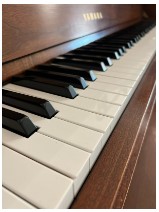 |
 |
 |
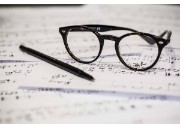
|
|
Focus of the Story |
We begin the year with ensemble and echo singing as we expand our understanding of pitch from high and low to going up and going down. |
Learning new notes continues our journey as we use body percussion, instruments, and voice to demonstrate the difference between melodic rhythm and steady beat. |
We continue growing our abilities to read music by learning to identify the melodic pitches of Sol and Mi and explore ways music can be created using technology and with different kinds of movement. |
Our year concludes with reading, writing and singing the pitches Sol, Mi and La as well as composing rhythmic patterns with traditional and nontraditional notation. |
|
Transfer Goals |
Understand and apply creative processes to guide the development of ideas, original works, and musical performance. Analyze, interpret, and evaluate musical works from a variety of cultures. Understand and find meaning in music as a form of community engagement through involvement as a performer, supporter, advocate, and audience member. Use music literacy to demonstrate understanding of the elements of music and the ways they inform artistic performance and creative expression. |
Understand and apply creative processes to guide the development of ideas, original works, and musical performance. Analyze, interpret, and evaluate musical works from a variety of cultures. Understand and find meaning in music as a form of community engagement through involvement as a performer, supporter, advocate, and audience member. Use music literacy to demonstrate understanding of the elements of music and the ways they inform artistic performance and creative expression. Use technology as a strategic mechanism for improving music literacy and improving music performance. |
Understand and apply creative processes to guide the development of ideas, original works, and musical performance. Analyze, interpret, and evaluate musical works from a variety of cultures. Understand and find meaning in music as a form of community engagement through involvement as a performer, supporter, advocate, and audience member. Explore and connect personal interests, experiences, and aspirations through vocation, advocacy, and arts patronage. Curate a portfolio of accomplishments, experiences, and performance materials exhibiting oneself as an artist. Use music literacy to demonstrate understanding of the elements of music and the ways they inform artistic performance and creative expression. Use technology as a strategic mechanism for improving music literacy and improving music performance. |
Understand and apply creative processes to guide the development of ideas, original works, and musical performance. Analyze, interpret, and evaluate musical works from a variety of cultures. Understand and find meaning in music as a form of community engagement through involvement as a performer, supporter, advocate, and audience member. Explore and connect personal interests, experiences, and aspirations through vocation, advocacy, and arts patronage. Curate a portfolio of accomplishments, experiences, and performance materials exhibiting oneself as an artist. Use music literacy to demonstrate understanding of the elements of music and the ways they inform artistic performance and creative expression. Use technology as a strategic mechanism for improving music literacy and improving music performance. |
|
Learning Targets |
I can share my ideas for creating music. I can describe and explain the difference between music with voices and music with only instruments. I can tell the difference between patterns that move up and patterns that move down. I can tell the difference between loud and soft. I can identify music from different places and cultures. I can identify and sing high and low sounds. (pitches) I can sing changing the dynamics and tempo. I can sing after the teacher. (ECHO) I can demonstrate the correct way to play an instrument. I can demonstrate a steady beat. I can switch between a steady beat and rhythm. I can demonstrate loud, soft, fast and slow with my body. |
I can use my body to create steady beat and rhythm patterns. I can group pitched and non-pitched instruments by their size and sound. I can hear the difference between rhythm patterns that have one and two sounds. I can listen to music and share my feelings about what I hear. I can identify music from different places and cultures. I can connect music to other things I am learning. I can identify high and low sounds. (pitches) I can read rhythms. I can sing changing the dynamics and tempo. I can demonstrate the correct way to play an instrument. I can switch between beat and rhythm. I can demonstrate high and low pitches. I can demonstrate loud, soft, fast and slow. I can perform dances or other musical activities. I can move to songs, stories and poems. |
I can create a rhythmic pattern. I can sort pitched and non-pitched instruments. I can listen to music and share my feelings about what I hear. I can use good citizenship to show appropriate audience and participant behavior in music. I can identify music from different places and cultures. I can identify how music can be created using technology. I can sing so-mi patterns using hand symbols I can match sounds with a pattern. I can use my head voice to sing high notes. I can sing alone or in a group. I can accompany a song/chant using body percussion (or) instrument. I can demonstrate the correct way to play an instrument. I can respond to music with locomotor and non-locomotor movements. I can act out/dramatize songs, stories, and poems. |
I can use my singing voice to answer a question. I can create a rhythmic pattern. I can share my ideas and steps for creating music. I can listen to music and share my feelings about what I hear. I can use good citizenship to show appropriate audience and participant behavior in a music setting. I can identify how music can be created using technology. I can connect music to other things I am learning. I can identify so, mi, and la. I can show the rhythms I hear. I can play expressively by changing the dynamics and tempo. I can demonstrate the correct way to play an instrument alone or in a group. I can perform dances or other musical activities. I can move to songs, stories and poems. |

